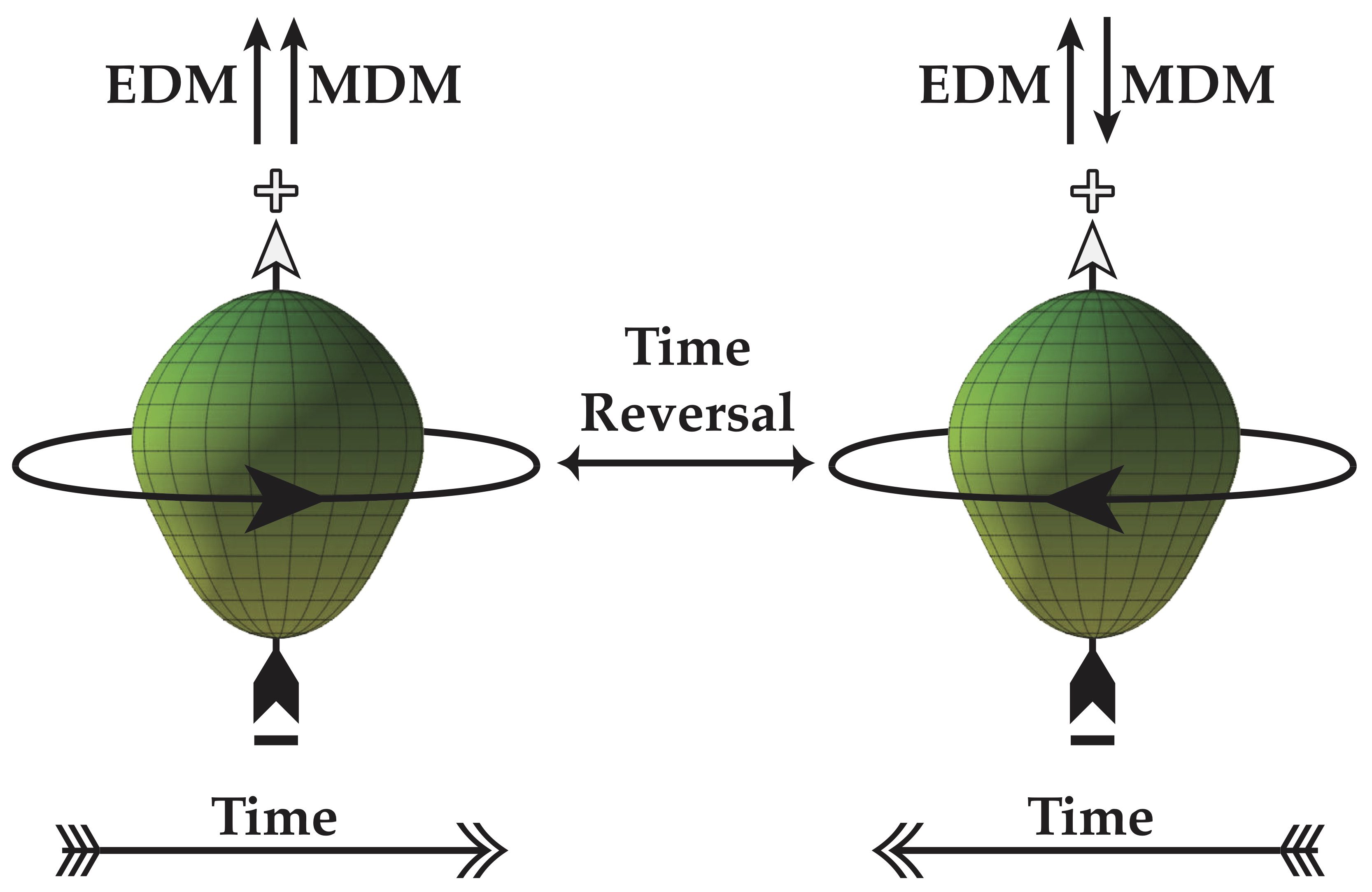The Search for the Origin of Visible Matter
Why is there something rather than nothing in the universe? The answer to this question is thought to be closely linked to fundamental interactions between subatomic particles that violate time-reversal symmetry. The discoveries of both time-reversal violation & parity (mirror symmetry) violation in the weak nuclear force, which is responsible for the beta decay of radioactive nuclei, played a critical role in the development of the Standard Model of particle physics. However, the amount of time-reversal violation currently predicted by the Standard Model is far too feeble to explain the present day abundance of matter (as opposed to antimatter) in the universe.
An unambiguous signature of both time-reversal & parity violation is the permanent electric dipole moment (EDM) of particles. Many extensions to the Standard Model, particularly those involving supersymmetry, predict EDMs that are several orders of magnitude larger than Standard Model predictions. Typical EDM experiments involve searching for a coupling between a spin-polarized particle’s EDM to an electric field causing a small shift in the magnetic resonance frequency of the particle located in a stable and uniform magnetic field. The statistical sensitivity of these experiments increases with the length of time the spins are interrogated, the strength of the electric field felt by the spins, and the square root of the number of spins. EDMs of diamagnetic atoms & molecules are primarily due to time-reversal violating interactions originating within the nucleus. The best limits on these kinds of interactions are presently derived from the atomic EDM limit of the stable mercury isotope Hg-199. An attractive alternative are certain radioactive isotopes, such as radium-225, actinium-225, and protactinium-229, that have pear-shaped nuclei, which amplify the observable EDM by one to several orders of magnitude compared to nearly spherical nuclei such as Hg-199. Our group is approaching this problem is variety of ways:
- We are developing a new technique to optically manipulate & probe nuclei embedded inside of cryogenic solids in the form of diamagnetic atoms (Ra-225 or Yb-171) or molecules (RaO or PaN). The major advantage of this technique is the near unity capture efficiency, which is critical when studying rare nuclei such as Ra-225 and Pa-229.
- We are part of the Radium EDM Collaboration (with Argonne and Kentucky). Ra-225 has a two week half life and is expected to be about a thousand times more sensitive than Hg-199. Our method uses laser cooling & trapping to collect & transport the atoms into a measurement region. Cold atoms that are tightly confined spatially by a laser trap are less sensitive to “vxE” systematic effects as well to magnetic & electric field inhomogeneities. Our long term goal, which could potentially take advantage of large amounts of Ra that will be produced at FRIB, is to perform a measurement with a physics sensitivity beyond what can be achieved with nearly spherical nuclei.
- We are part of the Xe EDM Collaboration (with TU-Munich, Michigan, and PTB). Large magnetizations of both Xe-129 and He-3 can be produced using spin exchange optical pumping. Very long spin precession times can be achieved in properly prepared glass containers in a carefully controlled magnetic field environment. Very high signal to noise measurements can be made using SQUID magnetometers. Our approach is to combine all three to improve the Xe-129 EDM limit by at least an order of magnitude over the previous limit. Our immediate goals are to develop polarized noble gas magnetometry for Neutron EDM experiments as well as to study the feasibility of developing a competitive Xe-129 EDM search.
Controlling Nuclear Spins Using Light
We are developing a new technique to optically manipulate & probe nuclei embedded inside of cryogenic solids in the form of atoms and molecules. Thin films of frozen noble gases, such as neon, are a transparent & quiet environment for nuclear spins. Hours long spin precession times are achievable even at high spin densities. Applications of this technique include:
- test of fundamental symmetries using rare nuclei
- measurements of rare nuclear reactions relevant for nuclear astrophysics
- long term storage & memory for quantum information processing

